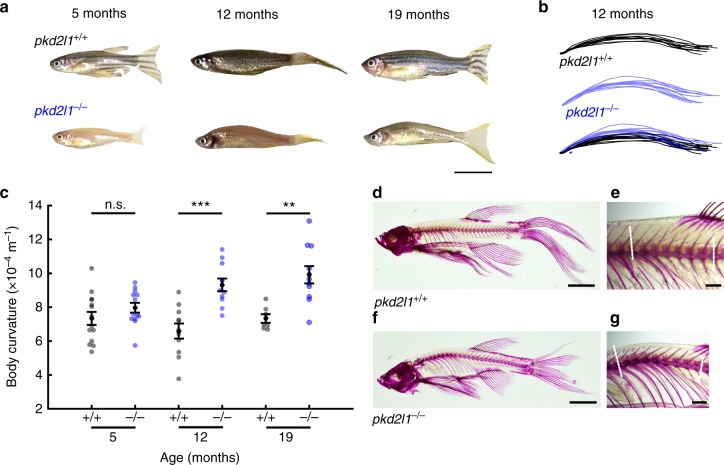Fig. 5.
Pkd2l1 is necessary to maintain a straight spine. a Representative pkd2l1+/+ and sibling pkd21−/− adult zebrafish at adult stages. Scale: 1 cm. b Body curvature traces from pkd2l1+/+ (black) and pkd2l1−/− (blue) adults at 12 months (n = 11 pkd21+/+, n = 11 pkd2l1−/−). c Quantification of body axis curvature. Each point represents one fish. Error bars represent s.e.m. (5 months: n = 14 pkd2l1+/+, n = 13 pkd2l1−/−, p = 0.02; 12 months: n = 11 pkd2l1+/+, n = 11 pkd2l1−/−, p = 1.42 × 10‒4; 19 months: n = 7 pkd2l1+/+, n = 11 pkd2l1−/−, p = 1.5 × 10‒3; two-sample t test). d Alizarin red staining of bones of an adult pkd2l1+/+ fish at 20 months of age, showing little to no spinal kyphosis. Scale: 5 mm. e High-magnification image of the precaudal region of the pkd2l1+/+ spine. Dotted lines indicate vectors used to calculate the Cobb angle. Scale: 1 mm. f Alizarin red staining of an adult pkd2l1−/− fish. Note the kyphosis in the precaudal region. Scale: 5 mm. g High-magnification image reveals pronounced kyphosis, no torsion is evident (see Supplementary Table 2 for Cobb angles). Scale: 1 mm

